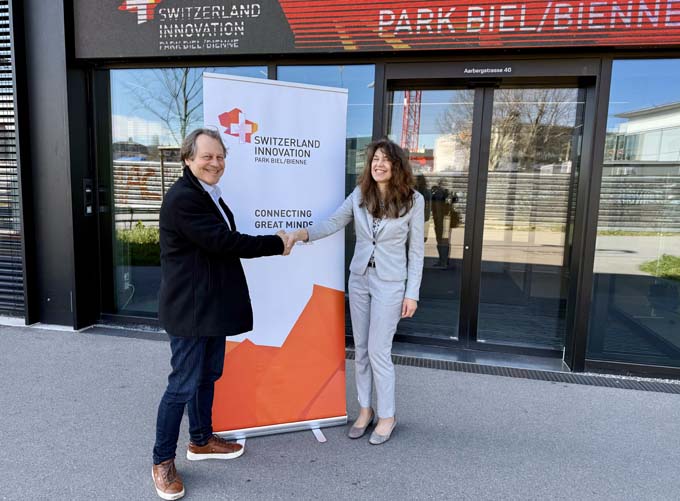Technology in transition: IT insights for 2025
Technological developments are advancing rapidly and creating new growth opportunities for companies. Regardless of industry, companies have the opportunity to incorporate new AI, cloud and IT solutions into their operations to streamline their work and support their employees.

New AI, cloud and IT solutions are constantly coming onto the market. However, companies need to plan carefully how they want to use these innovations. Unisys recently announced the Top IT Insights that will determine the future of new technologies. These insights illustrate the short-term potential of new technologies and show how managers can use them for long-term growth.
1. natural language is playing an increasingly important role in the interaction between AI and humans
The focus is shifting from training people to use AI to teaching AI to understand people. This is a significant change that will enable companies to use conversational approaches when interacting with AI tools. There will also be more voice and gesture-based interfaces that make AI more intuitive and accessible across devices.
2. small language models and edge computing are the next stage of development
Contrary to the motto "bigger is better", smaller specialized AI models in business applications are often more efficient than large ones. To ensure the right AI-powered models are used, organizations should identify when fast, local AI processing is required and when edge computing solutions are needed to protect sensitive data. Edge deployment, for example, can reduce the organization's costs while improving security and latency. These solutions provide more accurate outcomes for organizations to meet their unique requirements.
3. the hybrid cloud is on the rise
The cloud-first era is changing as rising costs are causing companies to re-evaluate the benefits of on-premises solutions. The focus is on the comparison between cloud costs and business value. Decisions need to be made as to which workloads should be operated locally and which in the cloud. Clear criteria for future migration decisions are becoming more important, while strategic infrastructure management and in-depth expertise are becoming increasingly important in the face of rising cloud costs.
4 Post-quantum cryptography: from theory to practice
Data stolen today could be decrypted by quantum computers tomorrow, which is why quantum-safe encryption is necessary. It is important to start implementing post-quantum cryptography standards, identify systems that need quantum-safe encryption, and create timelines for cryptography updates.
5. young professionals are the role model for an AI-supported workforce
Younger employees are "digital natives" and are often more comfortable with new technologies such as AI. It is important to continue hiring entry-level employees to attract digital talent, develop AI training programs and create mentoring opportunities that encourage the adoption and use of this technology. Success comes from combining new perspectives with proven expertise. Young talent is critical to continued growth.
6 The sweet spot for hybrid work is three days
The ideal office schedule is neither fully mobile nor fully present, but includes three days of presence. Hybrid work schedules should be structured around these three office days, designing spaces for collaboration and increasing virtual integration tools. A balance between face-to-face interaction and flexible remote working is crucial to optimize productivity and employee retention. Office spaces should be redesigned to maximize collaboration on in-person days.
7 Energy-efficient AI becomes a competitive advantage
Digitalization, rapid advances in AI technology and slow improvements in energy efficiency have significantly increased the demand for data centers, which has a significant impact on global energy markets. The demand for data centers in Europe will continue to increase. According to a recent Study the demand for data centers in Europe will increase to around 35 gigawatts (GW) by 2030, compared to 10 GW today. To meet this new IT demand, investments of more than 250 to 300 billion US dollars will be needed in data center infrastructure to meet this demand. However, the increasing energy consumption of AI could become a significant burden if efficiency is not improved. It is important to measure the energy consumption of AI, research efficient model architectures and consider sustainability when making decisions about AI deployment. With rising IT costs and energy requirements, efficiency is critical.
8 Global standards will shape the future of AI compliance
Companies need to localize AI operations to meet regional data requirements, bucking the trend towards cloud globalization. AI governance frameworks need to be implemented, regional data sovereignty requirements considered and clear employee guidelines for AI usage established. Robust compliance strategies are required due to varying global regulations. A flexible, region-specific approach to AI governance and data management is required.
Conclusion: clear technological vision required
These eight insights show that technological developments require both short-term action and long-term strategies. Companies are facing a crucial phase in which AI is becoming increasingly intuitive, IT architectures are becoming more complex and working models are evolving. These changes bring both opportunities and challenges.
The right balance between innovation and stability is important. If companies act too hesitantly, they risk being left behind. However, if they act too quickly and without careful planning, they risk their future viability. A clear technological vision and the ability to respond flexibly to change are crucial to future success in the dynamic business world.









